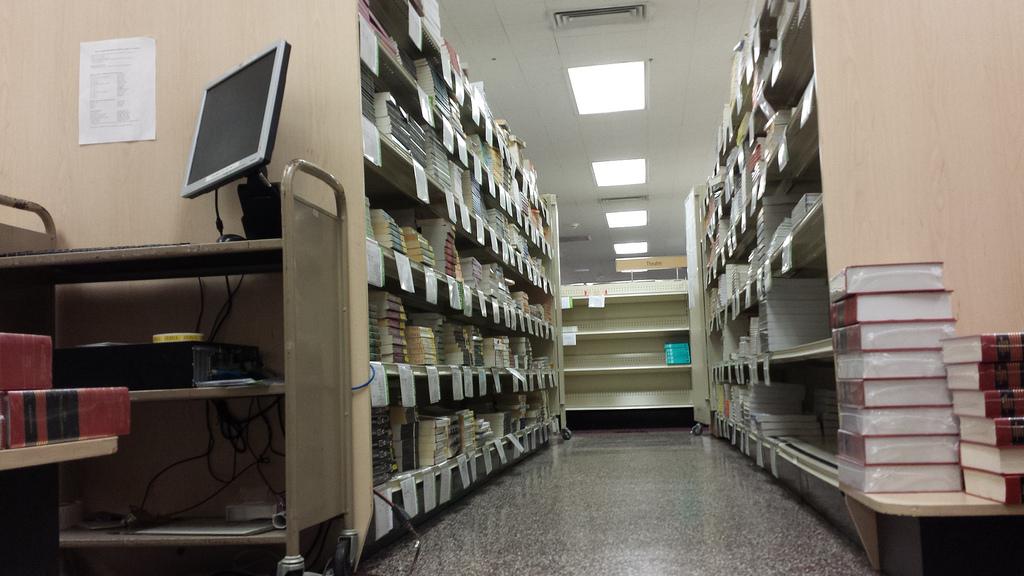Digital Textbooks Fail to Wrack Up Sales
Despite increased selection and savings, digital textbooks sales still remain low. (Mimi Ahn/The Observer)
September 23, 2013

Despite a wider selection of electronic textbook (eTextbook) offerings from major publishers and savings up to 60 percent off the hardcopy equivalent, digital copies of textbooks still remain low.
While 1,139 digital copies of textbooks were sold this fall, compared to 189 in Fall 2012, “Right now, I don’t think electronic textbooks account for a percentage point of the company of the books we sell today,” Jason Figueroa, general manager of the Fordham University bookstores, said. Still, he acknowledged that this was a “big increase” and that he could see that the demand is starting to build.
Currently eTextbooks can only be read on a Mac or PC. Devices like the iPad and Nook are not currently supported. According to Figueroa, eTextbook software for the iPad is currently being worked on, but no definitive date has been set for when it will be released.
One of the big problems remains, “Getting the right hardware and matching the right price to that hardware,” Figueroa said.
While hardware remains a hindrance to the possible success for eTextbooks, there are compatibility issues as well.
Figueroa explained, “There are a lot of different formats that publishers are working with that we have to work with so the customer, can read the book no matter what device they are using.”
Additionally, studying tools like highlighting, taking notes and sharing information with study groups has to be replicated in the digital format. “A lot of the first digital books were PDFs and there was no interaction and I don’t think that is what people are really looking for,” Figueroa said.
Even if all the hardware and software kinks are solved, getting professors and students to adopt the electronic format will be the next challenge.
“Once professors see the value that ebooks can bring to the classroom, it will be a key thing,” Figueroa said.
Some teachers are not so keen on the idea of eTextbooks. “I read an article about studies that have shown how students read better if they have the hardcopy of an essay or a book in their hands. They are able to better engage with the text,” Vlasta Vranjes, assistant professor in the English department at Fordham at Lincoln Center (FCLC), said. “While I can see the benefit of having an eTextbook on a laptop …what I don’t like about them is that I don’t know if students are surfing the web and there is a sense of barrier because there is a screen in between the student and myself.”
For students, the decision to buy an eTextbook is based on personal preferences. Some students are able to study off of their computer, while others like a hardcopy textbook.
Rosa Santos, FCLC ’15 said, “I like paper textbooks because I like the feel of paper in my hands. Also when I use electronics, I tend to feel distracted and tend to want to go on other sites.”
Olenka Preisler-Grabicki, FCLC ’15 said0, “I prefer using printouts and the hardcopy because I can make annotations in the margin and I can see it and have the option to easily flip back and forth between pages.”
However, not all students feel that eTextbooks are distracting or detract from the learning experience.
Quincy Martin-Chapman, FCLC ’15, said, “I do like using eTextbooks to a certain extent and I do feel more engaged.”
“It really comes down to how the student likes to study,” Figueroa said.
Despite the slow adoption rate of eTextbooks, Figueroa believes the eTextbook market is still young and will overtake physical textbooks in the next five years. “A lot of industry experts predict that this market will really grow once all the pieces are in place,” Figueroa said.
The deciding factor for the success of eTextbooks, however, is really in the hands of students in elementary and middle school.
Figueroa said, “The kids that are in and going to elementary school and intermediate school now and are using eTextbooks now. When they become of college age, they will be the ones to use it.”










